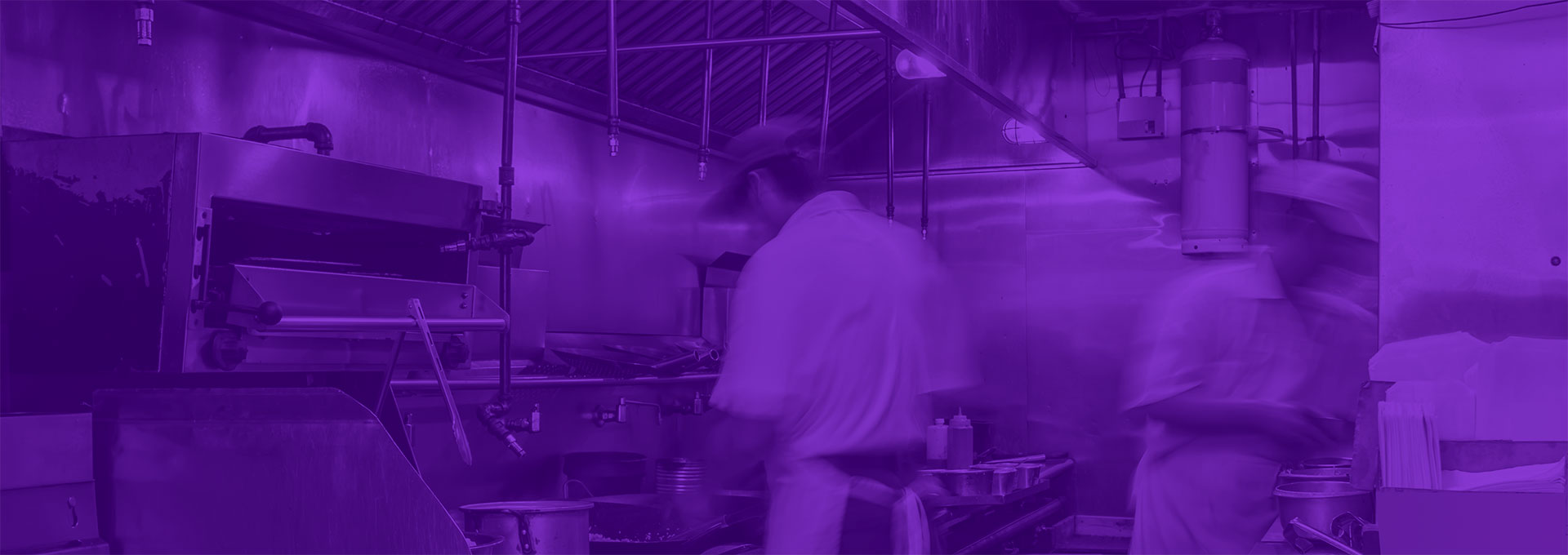Sustainable Commercial Refrigeration
Purchasing the most energy efficient commercial refrigeration and maintaining it properly will lower your energy costs and avoid issues that damage or spoil food. Energy consumption is one of the major costs to run a restaurant but there are various ways to manage it and improve overall efficiency. One study found that the refrigeration part of your utility bills can be as high as 16% of your total energy consumption. This article summarizes some ways to understand and manage these refrigeration costs. It will provide tips on purchasing and proper management of all your refrigerators and freezers. Efficient commercial refrigeration not only saves you money but it lowers your carbon footprint and supports communities and the planet.
Commercial Refrigeration Basics
Most restaurants use a combination of the two most common types of commercial refrigerators and freezers:
- “Walk-in”: a sealed room for storing bulk goods that can be walked into
- “Reach-in”: a small stand-alone unit that can be accessed conveniently by opening its doors.
There are different solutions available for both types ranging from full rebuilds or new ENERGY STAR models to small changes that can help improve the efficiency of a particular unit at little cost. The basic first step towards sustainable commercial refrigeration is purchasing modern equipment that is very energy efficient.
Designing and Building Walk-in Refrigerators
Commercial walk-in refrigerators by design are considerably more efficient than smaller reach-in models. So, if your business is growing and you utilize a lot of storage space for bulk goods, then it’s a good idea to consider building a walk-in fridge to help with storage and energy costs. Because your space and needs are unique, this can be a complex process and it is advised to work with a professional manufacturer.
When designing a new walk-in to fit your restaurant, here are key factors to consider:
- Size: How much space will you need to adequately store goods while still minimizing fabrication and energy costs?
- Location: Where can a walk-in be installed so that it creates easy access but avoids workflow obstacles when opening the door?
- Temperature: Will your walk-in be able to achieve the proper temperature and meet industry food safety standards?
- Insulation: Will your walk-in need additional insulation to combat external forces such as sunlight or adjacent HVAC units? These factors can cause your walk-in to work harder and use more energy in order to maintain its temperature.
- Permits and special contractors: Does your city or county require permits for food industry build-outs? Will you need oversight from a specialized contractor? Professional consulting is advisable when beginning to consider a project like this.
Maintaining Walk-in Refrigerators
Rebuilding your walk-in refrigerator can be costly, may require a temporary shut down, and could lead to other unexpected obstacles. A total rebuild is only necessary if your unit is having significant problems staying cold. Instead, it is often more practical to make smaller efficiency changes first such as:
- Ensuring that strip doors and gaskets are in good condition and replacing them when necessary.
- Managing door heaters and defrost cycles to ensure that your unit is working efficiently and not over performing during off-hours.
- Adding automatic door closers on walk-ins can also be very effective, especially in small to medium-sized restaurants that need to frequently go in and out of their unit.
- Cleaning and unclogging evaporators and fans. Dirt and debris can clog your cooling system and drastically reduce the efficiency of temperature control.
- Schedule routine inspections to ensure your unit is clean and working properly.
Purchasing Reach-in Refrigerators
ENERGY STAR models are some of the best on the market as they meet the highest energy efficiency standards. If you have a refrigerator that is 9-10 years old, it’s very possible this unit no longer meets these standards and could be costing you more than you realize.
Investing in a new fridge and/or freezer is a great way to realize savings on your energy bills, up to 900kWh for an approximate savings of $150. Additionally, purchasing an ENERGY STAR unit can create rebate opportunities. There are a variety of brands each with a range of models and features, so choosing one that fits for your needs and your budget will take careful planning. Locate providers of ENERGY STAR certified commercial food service equipment in your area.
Beverage-Air and Traulson are two well-known brands that specialize in making refrigeration equipment. Beverage-Air products range from home appliances to commercial refrigeration for small and medium-sized businesses like cafes and pizza shops. They also offer other types of equipment beyond just refrigerators and freezers.
Traulson is a specialty refrigeration company and touts themselves as the “gold standard” of refrigerators. Traulson’s refrigerators are geared towards high-end or larger organizations where specificity of temperature and larger units are critical. Both companies offer a range of ENERGY STAR products and provide the same variety of features for each unit.
2-Door vs 1-Door
There are 2-door designs for refrigerators and freezers in which the unit is split horizontally into two distinct compartments allowing for certain goods to be stored separately. A 1-door unit consists of only a single large compartment. While a 2-door unit can be more expensive, it consumes less energy to cool its smaller individual compartments. However, a 1-door option is still a suitable option (especially energy efficient certified models) if you need to keep costs low and don’t care about separating goods.
2-Door Models
Advantages
- Better organization
- Smaller compartments require less energy to maintain temperature and re-cool after opening the door.
Disadvantages
- More expensive
- If applicable, controlling two separate cooling temperatures can require more energy.
1-Door Models
Advantages
- Less expensive
Disadvantages
- Requires more energy to re-cool whole fridge after opening
Top vs Bottom-Mounted Cooling Units
Another factor to consider is whether the cooling mechanism is located at the top of the unit as opposed to the bottom. Both options offer unique advantages and disadvantages, and choosing the right option comes down to where the unit is located in your restaurant. A top-mounted unit is usually better in dry areas where dust and debris often settle on the floor and pose a clogging risk. A bottom mounted unit is more suitable for high-temperature kitchens that trap a lot of smoke and grease; keeping the cooling unit below these airborne impurities can preserve its efficiency.
Top-Mounted Unit
Advantages
- The heat from the unit is not channeled directly through the fridge space. This improves efficiency.
Disadvantages
- More difficult maintenance; a ladder is often required to access
- Exposed to smoke and grease; these impurities often collect around the ceiling above the unit
Bottom-Mounted Unit
Advantages
- Easier cleaning and maintenance
Disadvantages
- Heat rising through the fridge space causes the unit to work harder
- Exposed to dust and debris on the floor; fans vulnerable to clogging
Glass vs Stainless Steel
All models are available with either see-through glass doors or stainless steel doors. In terms of achieving optimal efficiency, steel doors provide much greater insulation compared to glass. The only caveat would be if you were looking to display products directly in your guests’ view.
Glass
Advantages
- Increased visibility for staff and guests
Disadvantages
- Lower insulation
- Greater fragility
- Show smears and grime and require more cleaning
Stainless Steel
Advantages
- Greater insulation
- Greater durability
- Dirty doors can be less noticeable
Disadvantages
- Need to be opened to see contents, reducing efficiency for both the unit and the staff
Summary: Energy Efficient Refrigeration Is Good for Your Business and the World
Understanding the energy consumption of your current refrigeration units and the options for improved efficiency is important in managing your bottom line and lowering your carbon footprint. Every restaurant has its own unique layout and needs, but finding the most suitable option for your business will open up numerous benefits such as:
- Financial: Optimizing energy consumption and controlling your refrigeration expenses can yield cost savings with virtually no impact on daily operations.
- Managerial: With an effective maintenance schedule, unit upkeep can be done quickly and confidently, leaving more time for your staff to focus on other important tasks.
- Environmental: Energy consumption from the food service industry contributes to grid demand, fossil fuel dependency, and climate change at large. Improving your operations to reduce energy use and improve efficiency helps preserve the integrity of your community and the environment. Not to mention this commitment to do good enhances your company image.
- Social: This commitment to do good enhances your company image, making you a stand out option for job seekers and restaurant goers alike. Not to mention your employees can feel proud to work for a company that is doing all it can to be better stewards of the planet.
For more tips on how to run a more sustainable restaurant, check out these waste management strategies for restaurants.
About the Author
Travers Schelleng
GBB Green Ambassador
Travers Schelleng is a content writer for Green Business Bureau who is looking to actively promote sustainability within the foodservice industry. With over a decade of restaurant expertise, he is currently working to help small businesses get a foothold in sustainability initiatives. Outside of work, Travers is passionate about music, film, and cooking.




